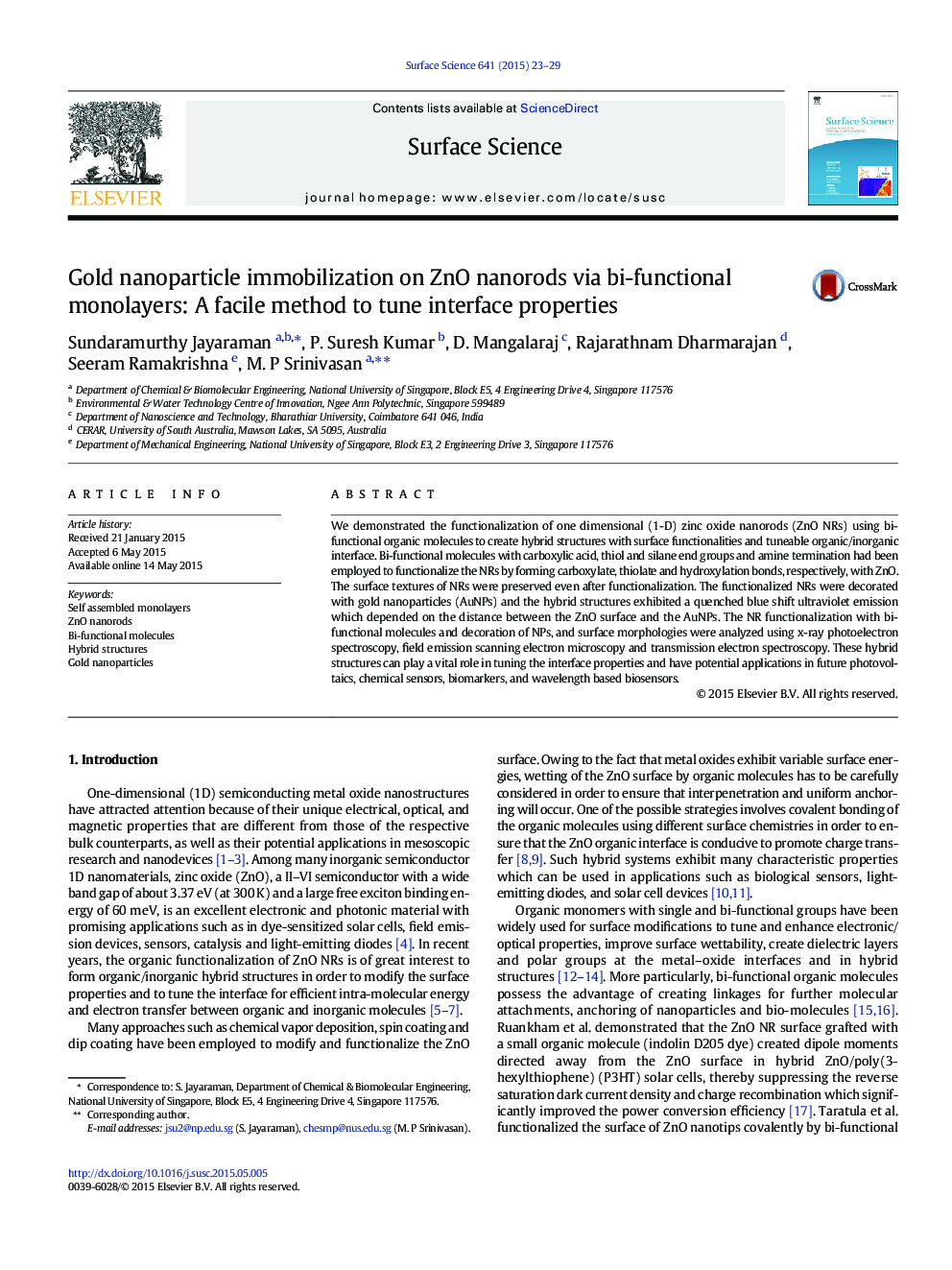| کد مقاله | کد نشریه | سال انتشار | مقاله انگلیسی | نسخه تمام متن |
|---|---|---|---|---|
| 5421727 | 1507889 | 2015 | 7 صفحه PDF | دانلود رایگان |

- One-dimensional ZnO NRs are synthesized by simple two solution approach at low temperatures.
- Hybrid structures are fabricated by functionalizing NRs with bi-functional molecules ending with amine termination.
- AuNPs decorated functionalized NRs exhibited quenched blue shift UV emission due to increased distance and interaction of NPs.
We demonstrated the functionalization of one dimensional (1-D) zinc oxide nanorods (ZnO NRs) using bi-functional organic molecules to create hybrid structures with surface functionalities and tuneable organic/inorganic interface. Bi-functional molecules with carboxylic acid, thiol and silane end groups and amine termination had been employed to functionalize the NRs by forming carboxylate, thiolate and hydroxylation bonds, respectively, with ZnO. The surface textures of NRs were preserved even after functionalization. The functionalized NRs were decorated with gold nanoparticles (AuNPs) and the hybrid structures exhibited a quenched blue shift ultraviolet emission which depended on the distance between the ZnO surface and the AuNPs. The NR functionalization with bi-functional molecules and decoration of NPs, and surface morphologies were analyzed using x-ray photoelectron spectroscopy, field emission scanning electron microscopy and transmission electron spectroscopy. These hybrid structures can play a vital role in tuning the interface properties and have potential applications in future photovoltaics, chemical sensors, biomarkers, and wavelength based biosensors.
107
Journal: Surface Science - Volume 641, November 2015, Pages 23-29